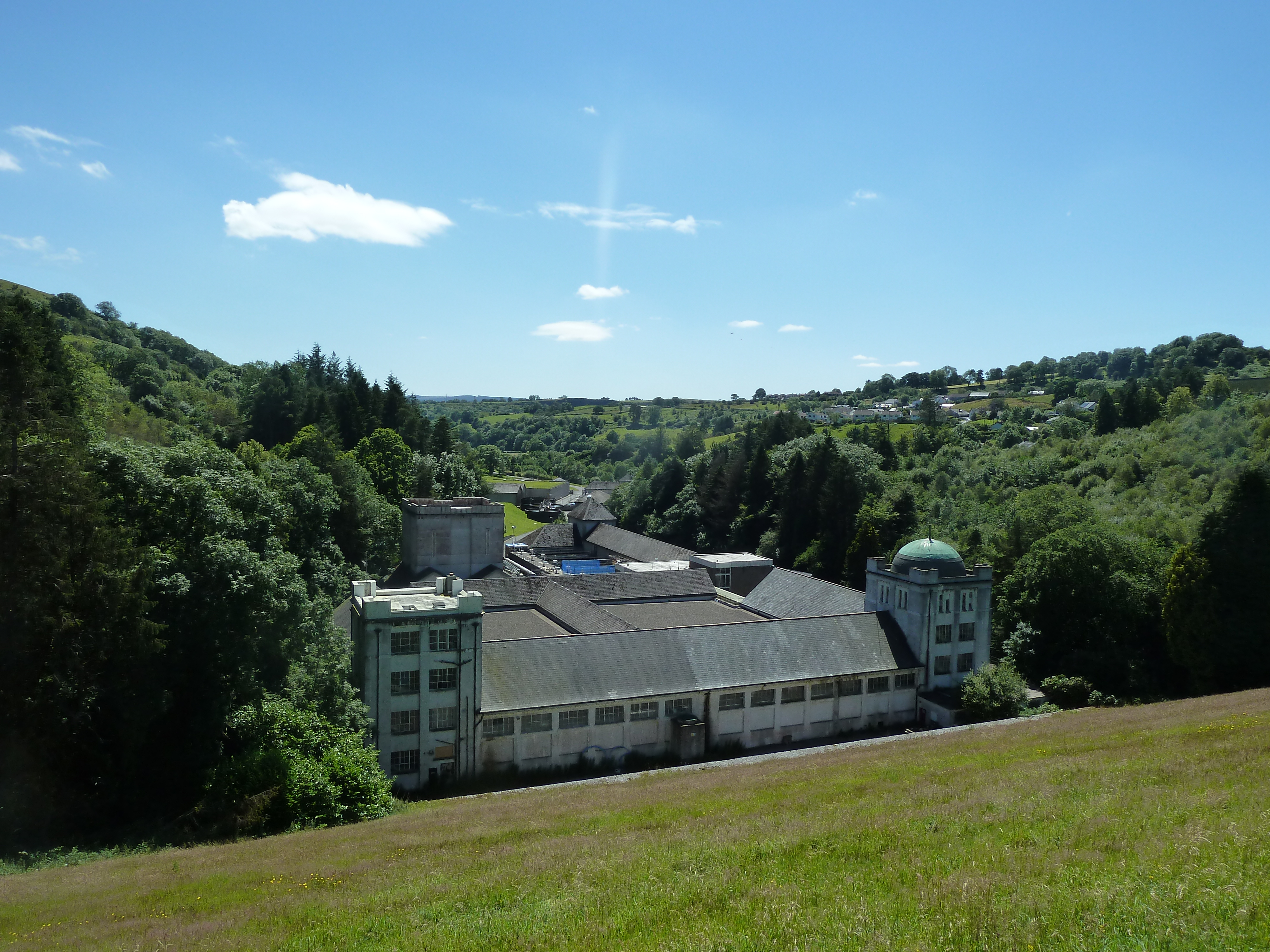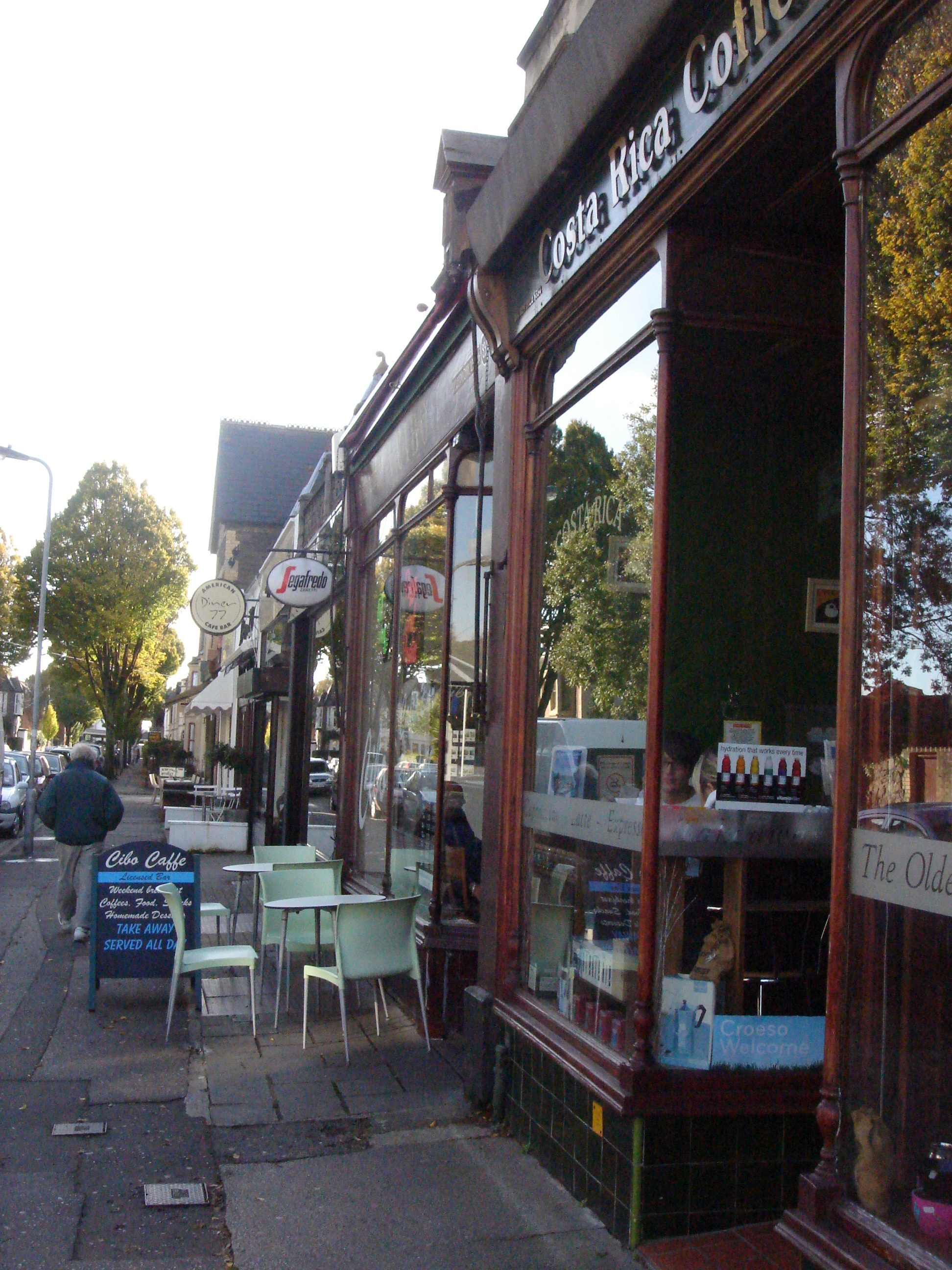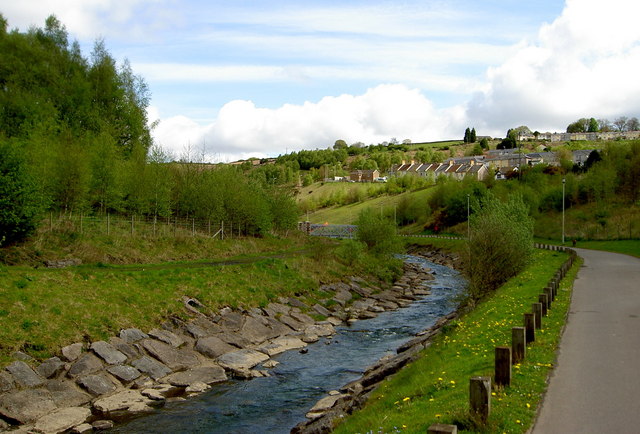|
Taff River
The River Taff ( cy, Afon Taf) is a river in Wales. It rises as two rivers in the Brecon Beacons; the Taf Fechan (''little Taff'') and the Taf Fawr (''great Taff'') before becoming one just north of Merthyr Tydfil. Its confluence with the River Severn estuary is in Cardiff. The river supports several species of migratory fish, including salmon, sewin (sea trout), and eel. Course From its confluence at Cefn-coed-y-cymmer, the river flows south, passing several towns. It picks up a few tributaries, such as the River Cynon, River Rhondda, Bargoed Taf and Nant Clydach. It flows through Pontypridd and through to Taff's Well, the site of Wales' only thermal spring. It flows underneath the M4 Motorway, before turning southeastward and flowing past the Cardiff suburbs of Radyr, Whitchurch, Llandaff, Pontcanna, the city centre and Grangetown, before emptying into Cardiff Bay, near to the mouth of the River Ely. Taf Fawr The Taf Fawr rises below the peak of Corn Du ... [...More Info...] [...Related Items...] OR: [Wikipedia] [Google] [Baidu] |
Llandaff
Llandaff (; cy, Llandaf ; from 'church' and '' Taf'') is a district, community and coterminous electoral ward in the north of Cardiff, capital of Wales. It was incorporated into the city in 1922. It is the seat of the Bishop of Llandaff, whose diocese within the Church in Wales covers the most populous area of Wales. History Most of the history of Llandaff centres on its role as a religious site. Before the creation of Llandaff Cathedral, it became established as a Christian place of worship in the 6th century AD, probably because of its location as the first firm ground north of the point where the river Taff met the Bristol Channel, and because of its pre-Christian location as a river crossing on a north–south trade route. Evidence of Romano-British ritual burials have been found under the present cathedral. The date of the moving of the cathedral to Llandaff is disputed, but elements of the fabric date from the 12th century, such as the impressive Romanesque Urban Arch ... [...More Info...] [...Related Items...] OR: [Wikipedia] [Google] [Baidu] |
Grangetown, Cardiff
Grangetown (Welsh: usually ''Grangetown'', also Trelluest) is a district and community in the south of Cardiff, capital of Wales. It is one of the largest districts in the south of the city and is bordered by Riverside, Canton and Butetown. The River Taff winds its way through the area. Adjacent to the city's Cardiff Bay area, Grangetown is experiencing a period of gentrification and improvements in its infrastructure. Its population as of 2011 was 19,385 in 8,261 households. One of the "five towns of Cardiff", the others are Butetown, Crockherbtown, Newtown and Temperance Town. Grangetown is a diverse and multiracial district and has a significant population of Somali, Asian and mixed-race residents. It is home to a Swaminarayan Temple and various mosques. Etymology The name ''Grangetown'' is the usual form in Welsh. The variants ''Y Grange'' (dating back to the nineteenth century) and ''Y Grênj'' (equivalents of ''The Grange'') are sometimes seen. Owen John Thomas ha ... [...More Info...] [...Related Items...] OR: [Wikipedia] [Google] [Baidu] |
Pontcanna
Pontcanna () is a district and community in the city of Cardiff, Wales. It is located a short distance to the west of the city centre, and its borders are approximately indicated by Western Avenue, the River Taff, Cowbridge Road East, Llandaff Road and Cardiff Road. Description Pontcanna is an area of wide tree-lined streets and large houses. It is a relatively wealthy area with numerous cafes and independent retailers centred on Pontcanna Street and Cathedral Road. There is both a large English-born population (roughly 25%) and a smaller Welsh-speaking population (roughly 20%). The area was formerly home to the television studios of TWW, Teledu Cymru, HTV and S4C's headquarters; the BBC's Broadcasting House was nearby in Llandaff. Many of the larger villas (particularly on Cathedral Road) have been converted into flats, guest houses or business premises. Located on the edge of Cardiff city centre, Pontcanna gives easy access to the centre for professionals, as well as acc ... [...More Info...] [...Related Items...] OR: [Wikipedia] [Google] [Baidu] |
Whitchurch, Cardiff
Whitchurch () is a suburb and community in the north of Cardiff, capital of Wales. It is approximately 3 miles north of the centre of the city on the A470 road and A4054 road. It falls within the Whitchurch & Tongwynlais ward. The population of the community in 2011 was 14,267. Description With the expansion of Cardiff in the 20th century, Whitchurch is no longer a separate village, although residents refer commonly to "The Village" in preference to acknowledging its suburban status. The modern suburb contains a number of schools, a shopping centre, Whitchurch Library and the Velindre Cancer Centre, a major cancer hospital in Wales. The national office of the Presbyterian Church of Wales is located at the Tabernacle Church, Whitchurch. History Whitchurch draws its name from ''White Church''. The first mention of the area was in 1126 when the land was granted to Llandaff Cathedral and a chapel was built where Old Church Road now stands. The church, St Mary's, remained a ... [...More Info...] [...Related Items...] OR: [Wikipedia] [Google] [Baidu] |
Radyr
Radyr ( cy, Radur) is an outer suburb of Cardiff, about northwest of Cardiff city centre. Radyr is part of Radyr and Morganstown Community, for which the 2011 Census recorded a population of 6,417. Morganstown is north of Radyr, on the other side of the M4 Motorway. Neighbouring communities are Whitchurch to the east on the opposite bank of the River Taff, Pentyrch to the west with St Fagans and Llandaff to the south. History Stone Age until the Norman Conquest Evidence of Stone Age occupation of the Lesser Garth Cave near Morganstown was discovered in 1912 and included worked flints. In 1916 excavation of a mound of in Radyr Woods revealed charcoal and Iron Age pottery. Radyr developed after the Norman invasion of Wales at the start of the 12th century and formed part of the Welsh Lordship or cantref of Miskin under the Lordship of Glamorgan created by the Norman King, William Rufus, in 1093. Origin of the name Hints about the derivation of the name ''Radyr'' can ... [...More Info...] [...Related Items...] OR: [Wikipedia] [Google] [Baidu] |
M4 Motorway
The M4, originally the London-South Wales Motorway, is a motorway in the United Kingdom running from west London to southwest Wales. The English section to the Severn Bridge was constructed between 1961 and 1971; the Welsh element was largely complete by 1980, though a non-motorway section around Briton Ferry bridge remained until 1993. On the opening of the Second Severn Crossing in 1996, the M4 was rerouted over it. The line of the motorway from London to Bristol runs closely in parallel with the A4. After crossing the River Severn, toll-free since 17 December 2018, the motorway follows the A48, to terminate at the Pont Abraham services in Carmarthenshire. The M4 is the only motorway in Wales apart from its two spurs: the A48(M) and the M48. The major towns and cities along the routea distance of approximately include Slough, Reading, Swindon, Bristol, Newport, Cardiff, Bridgend, Port Talbot and Swansea. History A new road from London to South Wales was first propo ... [...More Info...] [...Related Items...] OR: [Wikipedia] [Google] [Baidu] |
Taff's Well
Taff's Well () is a semi-rural village, community and electoral ward located at the south easterly tip of Rhondda Cynon Taf, to the north of Cardiff, the capital city of Wales. Known locally as the 'Gates to the Valleys', it is separated from Gwaelod Y Garth by the River Taff. Taff's Well is distinguished because it contains the only thermal spring in Wales. The tepid water is thought to rise along a fault-line from the Carboniferous Limestone, in somewhat similar manner to the warm springs at Bristol and Bath. Various religious groups regard it as a spiritual site. The Garth Mountain overlooks the village and was the inspiration for the fictional "Ffynnon Garw", featured in the book, and film ''The Englishman Who Went Up a Hill But Came Down a Mountain''. Name The name "Taff's Well" is derived from the situation of the village alongside the River Taff and the presence of the warm spring within Taff's Well Park. Thermal spring Taff's Well Park (Parc Ffynnon Taf) is the site ... [...More Info...] [...Related Items...] OR: [Wikipedia] [Google] [Baidu] |
Taff Bargoed
The Taff Bargoed () is a river and valley near Pontypridd in South Wales, and lies off the Abercynon roundabout on the A470 road, and is approximately 14 miles from Cardiff. The main settlements are Nelson, Edwardsville, Quakers Yard, Treharris, Trelewis, and Bedlinog. The valley is situated where the three County Boroughs of Caerphilly, Rhondda Cynon Taff, and Merthyr Tydfil meet. History Originally a collection of farms, from the early 1800s the valley was industrialised through coal mining, developing a rich Industrial heritage. During the Industrial Revolution the area was home to the Trelewis Drift Mine, the Taff Merthyr Colliery and the Deep Navigation collieries. In 1886 the Rhymney Railway opened the Taff Bargoed Line up the valley, serving Bedlinog railway station and Cwm Bargoed railway station. Passenger services ended in 1964, but the line remained open for coal trains, later serving the Ffos-y-fran Land Reclamation Scheme. The coal mines closed in the 1980 ... [...More Info...] [...Related Items...] OR: [Wikipedia] [Google] [Baidu] |
Sewin
Sea trout is the common name usually applied to anadromous (sea-run) forms of brown trout (''Salmo trutta''), and is often referred to as ''Salmo trutta'' morpha ''trutta''. Other names for anadromous brown trout are sewin (Wales), peel or peal ( Southwest England), mort (Northwest England), finnock (Scotland), white trout (Ireland) and salmon trout (culinary). The term "sea trout" is also used to describe other anadromous salmonids, such as coho salmon (''Oncorhynchus kisutch''), coastal cutthroat trout (''Oncorhynchus clarkii clarkii''), brook trout (''Salvelinus fontinalis''), Arctic char (''Salvelinus alpinus alpinus'') and Dolly Varden (''Salvenlinus malma''). Even some non-salmonid fish species are also commonly known as sea trout, such as Northern pikeminnow (''Ptychocheilus oregonensis'') and members of the weakfish family (''Cynoscion''). Range Anadromous brown trout are widely distributed in Europe along the Atlantic and Baltic coasts, the United Kingdom and the co ... [...More Info...] [...Related Items...] OR: [Wikipedia] [Google] [Baidu] |
Salmon
Salmon () is the common name In biology, a common name of a taxon or organism (also known as a vernacular name, English name, colloquial name, country name, popular name, or farmer's name) is a name that is based on the normal language of everyday life; and is often contra ... for several list of commercially important fish species, commercially important species of euryhaline ray-finned fish from the family (biology), family Salmonidae, which are native to tributary, tributaries of the North Atlantic (genus ''Salmo'') and North Pacific (genus ''Oncorhynchus'') basin. Other closely related fish in the same family include trout, Salvelinus, char, Thymallus, grayling, Freshwater whitefish, whitefish, lenok and Hucho, taimen. Salmon are typically fish migration, anadromous: they hatch in the gravel stream bed, beds of shallow fresh water streams, migrate to the ocean as adults and live like sea fish, then return to fresh water to reproduce. However, populations of several spe ... [...More Info...] [...Related Items...] OR: [Wikipedia] [Google] [Baidu] |
Migratory Fish
Fish migration is mass relocation by fish from one area or body of water to another. Many types of fish migrate on a regular basis, on time scales ranging from daily to annually or longer, and over distances ranging from a few metres to thousands of kilometres. Such migrations are usually done for better feeding or to reproduce, but in other cases the reasons are unclear. Fish migrations involve movements of schools of fish on a scale and duration larger than those arising during normal daily activities. Some particular types of migration are ''anadromous'', in which adult fish live in the sea and migrate into fresh water to spawn; and ''catadromous'', in which adult fish live in fresh water and migrate into salt water to spawn. Marine forage fish often make large migrations between their spawning, feeding and nursery grounds. Movements are associated with ocean currents and with the availability of food in different areas at different times of year. The migratory movements ma ... [...More Info...] [...Related Items...] OR: [Wikipedia] [Google] [Baidu] |



